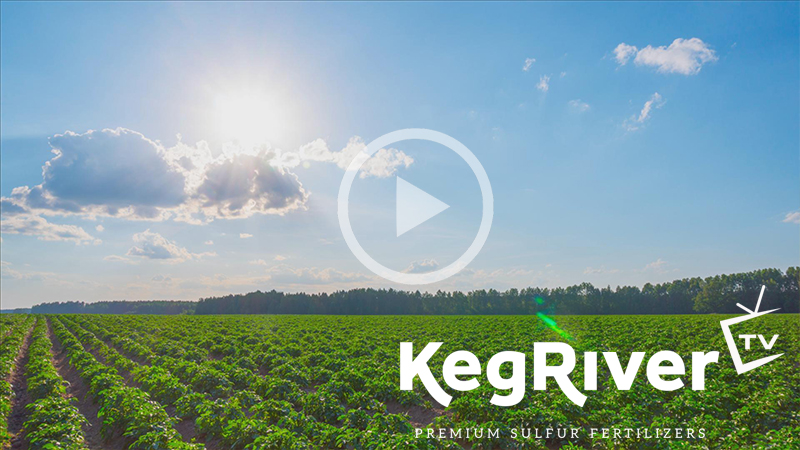Watch: Why Sulfur is Essential to Photosynthesis
When you have healthy green leaves from the earliest stages of growth, you increase the likelihood of putting more green in your bank account at harvest time.
Creating energy vital to plant function.
Photosynthesis is a process that converts light energy from the sun into chemical energy to fuel essential activities within the plant. It ensures plants get enough chlorophyll, a green pigment that helps absorb sunlight through their leaves to synthesize food. This food is in the form of glucose – which is produced from carbon dioxide and water.
For photosynthesis to occur, plants require:
- Sunlight
- Carbon dioxide
- Water
Why sulfur is essential to photosynthesis
Sulfur is necessary for producing a key enzyme that is vital to chlorophyll production. If there is not ample sulfur, chlorophyll production will decline. A reduction of chlorophyll impairs the plant’s ability to absorb sunlight. This prevents the plant from generating the energy necessary for healthy plant function (including fruit and grain development and pod fill in soybeans and oilseed crops).
If you want to get more technical, sulfur is a key component in the makeup of amino acids, chloroplasts, sulfatides, vitamins, and coenzymes. For this reason, sulfur is not only vital to photosynthesis, but it also plays a crucial role in respiration and the formation of cell membrane structures in plants.1
Do you have sulfur deficiency? Look for this key sign.
Crops that are deficient in sulfur can often be identified by yellowing leaves.
With sulfur deficiency, the yellowing will occur on newer (upper) leaves. In some crops, such as corn, there is a striping pattern to the newer leaves.
This is an important distinction: as yellowing leaves are also a sign of nitrogen deficiency. The key difference is that with nitrogen deficiency, the yellowing will occur on older leaves near the bottom of the plant.
Where is sulfur deficiency most prevalent?
Sulfur deficiency is increasingly becoming a problem in North American soils. Concerted efforts to reduce pollution by targeting sulfur emissions have removed a once “free” source of sulfur from the equation.
If you are growing crops with a high sulfur demand (oilseeds, legumes, corn, alfalfa, root crops, sorghum, and crucifers), you will need to be more diligent. Cereals tend to be less prone to deficiency.
Crops grown in sandy, coarse-textured soils often require extra attention. They don’t hold sulfur nutrients as well and are prone to leaching (a concern when using sulfate fertilizers). Elemental sulfur fertilizers that provide controlled conversion to sulfate throughout the growing season will reduce the risk of leaching.
Be proactive in identifying and preventing sulfur deficiency
Here are some suggestions for preventing sulfur deficiency from interrupting photosynthesis and other dependent plant functions:
- Regularly scout your crops and look for any warning signs of disease or deficiency (yellowing of new leaves).
- Soil testing can help identify available sulfur; however, it can be tricky. Tissue testing can be helpful.
- Monitoring sulfur removal is a helpful tool for determining requirements for sulfur fertilizer.
If you notice signs of deficiency, you should work with an agronomist to look into a rescue treatment. To prevent this from becoming a recurring issue, consider an annual elemental sulfur program to build sulfur levels in your soils moving forward.
With the right care and attention, we see a bright green future ahead!
FOOTNOTE:
1 https://www.ncbi.nlm.nih.gov/pmc/articles/PMC7727837/





